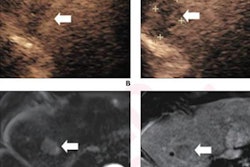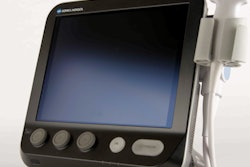Wednesday, November 30 | 1:30 p.m.-2:30 p.m. | W6-SSOB02-6 | E353C
Ultrasound molecular imaging (USMI) using a clinical-grade contrast agent shows promise for characterizing ovarian masses, according to this scientific presentation.Dr. Neha Antil from Stanford University will discuss the findings, which explored the use of Kinase insert domain receptor (KDR)-targeted contrast microbubbles in such imaging and assessed how well it correlates with gold standard surgical histopathology (HPE).
In the team's study, USMI was performed in 24 women with complex ovarian masses and an age range of 48 to 79. KDR-targeted microbubbles were manually injected over 10 seconds followed by a 10 mL saline flush, all while imaging with B-mode and contrast mode side-by-side. The researchers acquired images starting with initial 45 seconds acquisition to capture the wash-in phase of KDR-targeted imaging. This was followed by a 10-second acquisition every two minutes until 30 minutes had passed.
The team found that 22 of the 24 ovarian lesions were confirmed on surgical HPE. The other two were found outside the ovaries during surgery. These two were excluded from the final analysis. Out of the remaining 22 lesions, 13 were deemed to be malignant.
The group also found that qualitative USMI analysis showed a sensitivity of 76.92%, specificity of 77.78%, positive predictive value of 83.33%, and negative predictive value of 70%. Quantitative analysis showed USMI has a sensitivity of 100%, specificity of 88.89%, positive predictive value of 92.85%, and negative predictive value of 100% when compared with gold standard HPE, the researchers noted.
For more information on the team's findings, please attend this session.




















